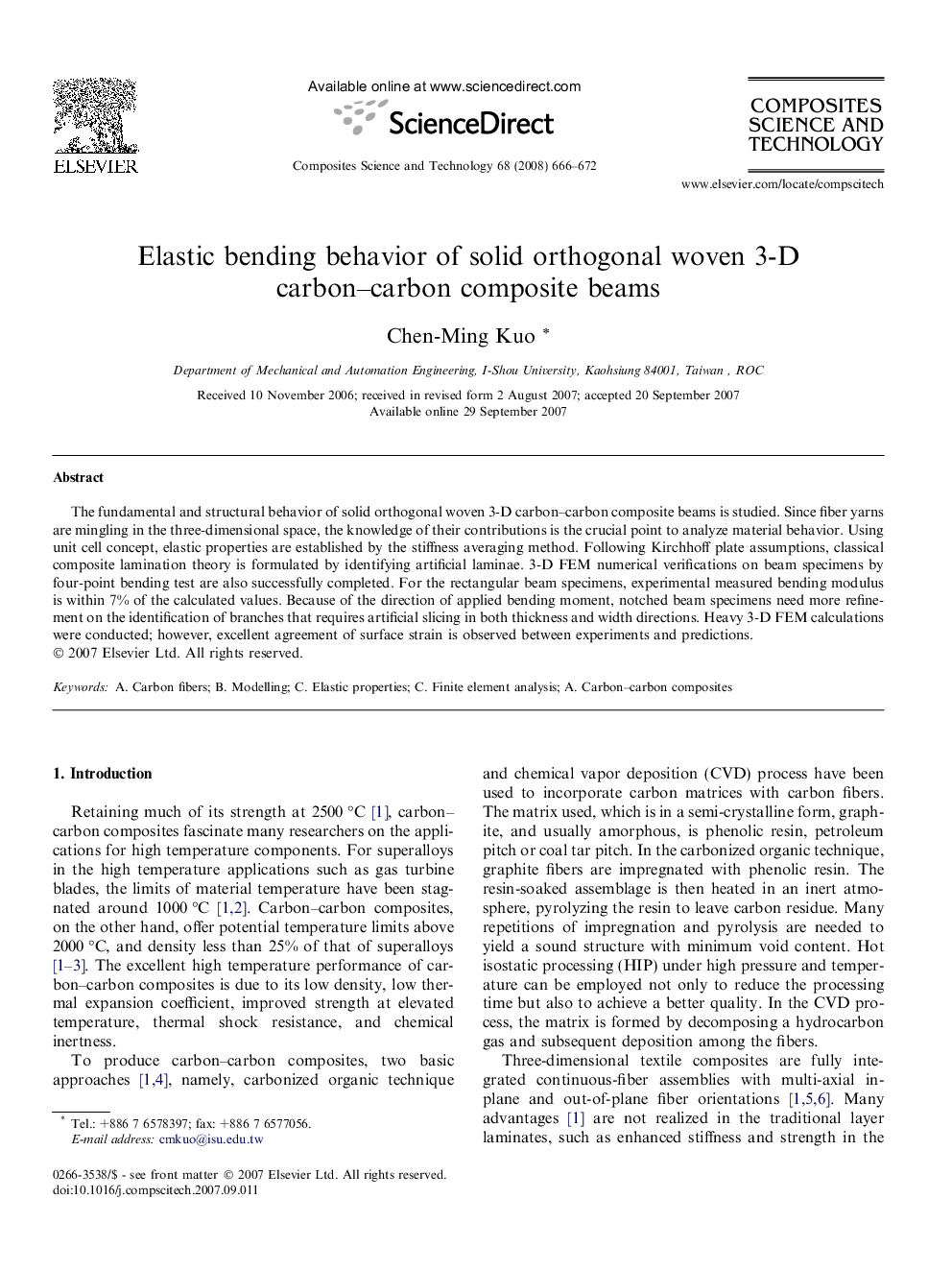| Article ID | Journal | Published Year | Pages | File Type |
|---|---|---|---|---|
| 822346 | Composites Science and Technology | 2008 | 7 Pages |
The fundamental and structural behavior of solid orthogonal woven 3-D carbon–carbon composite beams is studied. Since fiber yarns are mingling in the three-dimensional space, the knowledge of their contributions is the crucial point to analyze material behavior. Using unit cell concept, elastic properties are established by the stiffness averaging method. Following Kirchhoff plate assumptions, classical composite lamination theory is formulated by identifying artificial laminae. 3-D FEM numerical verifications on beam specimens by four-point bending test are also successfully completed. For the rectangular beam specimens, experimental measured bending modulus is within 7% of the calculated values. Because of the direction of applied bending moment, notched beam specimens need more refinement on the identification of branches that requires artificial slicing in both thickness and width directions. Heavy 3-D FEM calculations were conducted; however, excellent agreement of surface strain is observed between experiments and predictions.
